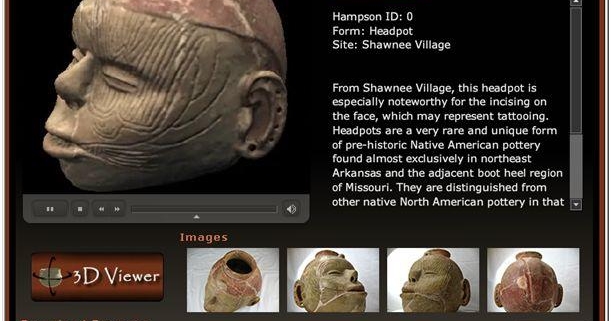Laser Scanning Guide to Good Practice [Archaeology]
 The Archaeology Data Service is currently undertaking a collaborative two-year project with Digital Antiquity to broaden and update their series of Guides to Good Practice. The project will encompass important revisions of the existing six ADS Guides as well as the development of entirely new documents covering areas such as marine scanning, laser scanning, GPS, digital audio and digital video. Previous authors have been asked to revise existing content and new authors, from both Europe and the US, will contribute to the development of the guides into new themes and areas.
The Archaeology Data Service is currently undertaking a collaborative two-year project with Digital Antiquity to broaden and update their series of Guides to Good Practice. The project will encompass important revisions of the existing six ADS Guides as well as the development of entirely new documents covering areas such as marine scanning, laser scanning, GPS, digital audio and digital video. Previous authors have been asked to revise existing content and new authors, from both Europe and the US, will contribute to the development of the guides into new themes and areas.
The project is in collaboration with the Digital Antiquity initiative, a US-based project with the aim of enhancing the preservation of and access to digital records of archaeological investigations. A major aim of the Guides is to provide the basis for archaeological project workflows that will create digital datasets that can be archived and shared effectively by Digital Antiquity’s tDAR repository in the US and by the Archaeology Data Service in the UK. The development of the Guides involves close collaboration with teams in the US at both the University of Arkansas and Arizona State University.
Other ADS projects are also planned to feed into the revision and development of the Guides. ADS involvement in the European VENUS project will result in one of the first published guides focussing on marine scanning and photogrammetry. In addition, the incorporation of findings from the ADS Big Data project, together with the revision of the existing guide on aerial photography and remote sensing data, will see a significant contribution to the guides from English Heritage funded projects.
The new Guides are under development and only selected sections are publicly available. The new Guides to Good Practice are scheduled to be released in January 2011.
Excerpt from Laser Scanning A Guide to Good Practice
By Angie Payne
Edited by Kieron Niven
This guide serves as a guide to good practice for the collection and archival of point cloud datasets and the additional derived products produced by terrestrial laser scanners in cultural heritage applications. It is recommended to read this guide in conjunction with Section 7 of the Metric Survey Specifications for Cultural Heritage (Bryan et al 2009) titled ‘Standard Specification for the Collection and Archiving of Terrestrial Laser Scan Data’ published by English Heritage. The Metric Survey Specifications for Cultural Heritage provides an excellent foundation for discussion of key project elements particularly project planning, data collection, and preliminary processing of terrestrial scan data. A lot of these points will be reiterated throughout this document. This guide builds upon the specifications provided by the Metric Survey Specifications for Cultural Heritage by broadening the scope to include such topics as accurate RGB/color acquisition and by also suggesting standards for archiving the derived products of point cloud datasets. Other key resources that were influential in the creation of this guide are 3D Laser Scanning for Heritage (English Heritage 2007) and Theory and Practice on Terrestrial Laser Scanning (3D Risk Mapping 2008).
This guide is not a “How To” document that describes methods for collecting and processing scan data but rather a guide to inform individuals of key considerations and metadata elements to document in scanning projects that will allow them to easily archive their heritage datasets. The graphic below shows the key steps of data acquisition and processing, metadata documentation, and data archival for laser scan datasets.These key areas form the basis for discussion for Sections 2 and 3 of this document; Section 1 provides introductory material and Section 4 provides a case study and sample metadata. It is our hope that the metadata elements discussed here will easily integrate into most heritage scanning projects and will promote the ease in archiving and the long term preservation of these valuable datasets.
 |
The full draft is available for review at http://guides.archaeologydataservice.ac.uk/g2gp/LaserScan_Toc.




Leave a Reply
Want to join the discussion?Feel free to contribute!